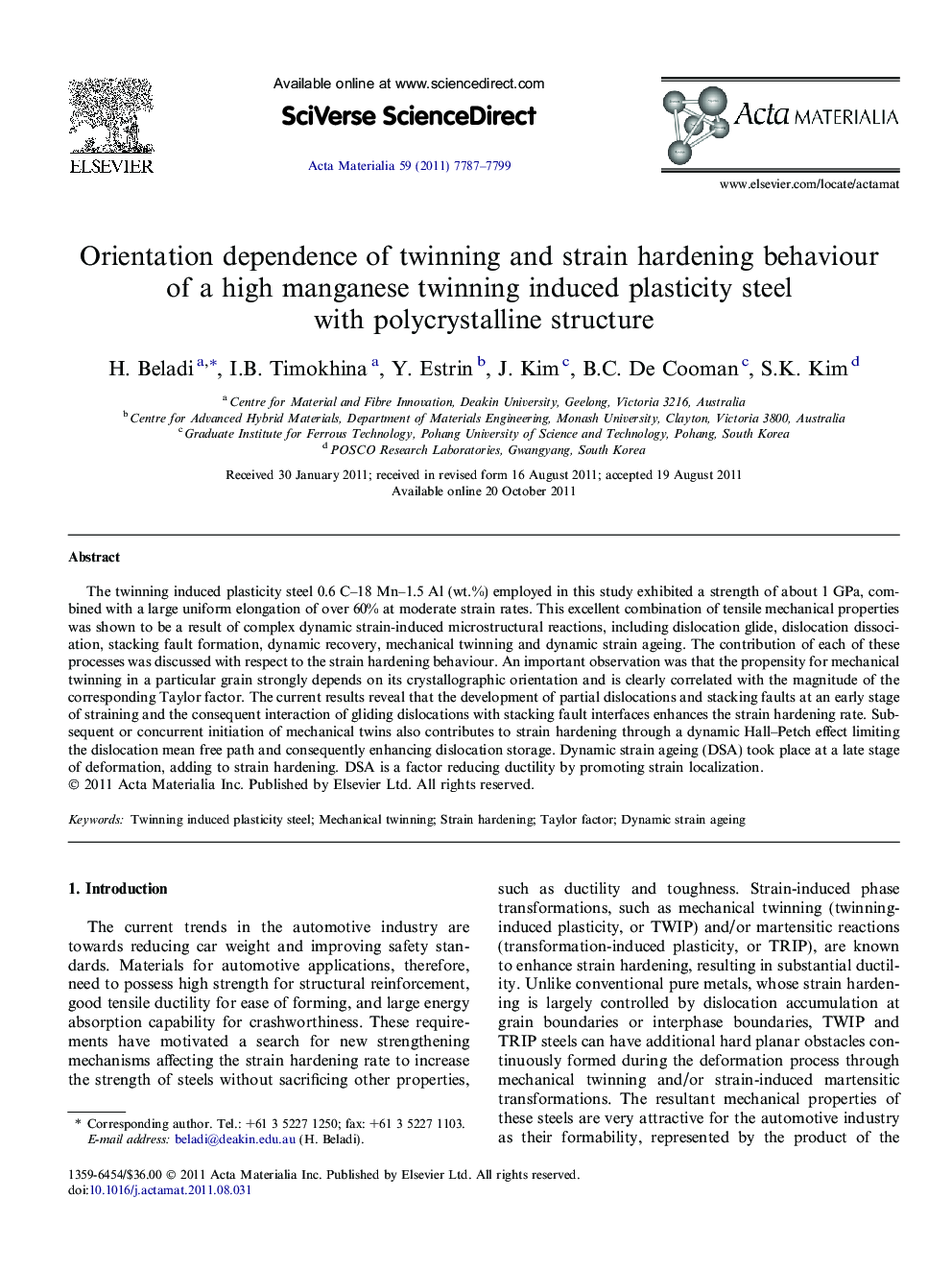| Article ID | Journal | Published Year | Pages | File Type |
|---|---|---|---|---|
| 10620377 | Acta Materialia | 2011 | 13 Pages |
Abstract
The twinning induced plasticity steel 0.6 C-18 Mn-1.5 Al (wt.%) employed in this study exhibited a strength of about 1Â GPa, combined with a large uniform elongation of over 60% at moderate strain rates. This excellent combination of tensile mechanical properties was shown to be a result of complex dynamic strain-induced microstructural reactions, including dislocation glide, dislocation dissociation, stacking fault formation, dynamic recovery, mechanical twinning and dynamic strain ageing. The contribution of each of these processes was discussed with respect to the strain hardening behaviour. An important observation was that the propensity for mechanical twinning in a particular grain strongly depends on its crystallographic orientation and is clearly correlated with the magnitude of the corresponding Taylor factor. The current results reveal that the development of partial dislocations and stacking faults at an early stage of straining and the consequent interaction of gliding dislocations with stacking fault interfaces enhances the strain hardening rate. Subsequent or concurrent initiation of mechanical twins also contributes to strain hardening through a dynamic Hall-Petch effect limiting the dislocation mean free path and consequently enhancing dislocation storage. Dynamic strain ageing (DSA) took place at a late stage of deformation, adding to strain hardening. DSA is a factor reducing ductility by promoting strain localization.
Keywords
Related Topics
Physical Sciences and Engineering
Materials Science
Ceramics and Composites
Authors
H. Beladi, I.B. Timokhina, Y. Estrin, J. Kim, B.C. De Cooman, S.K. Kim,
